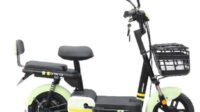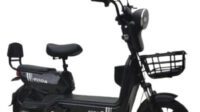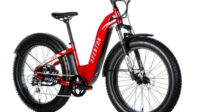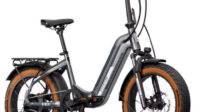
Your safety should be a top priority when you’re out on your bike. A crucial aspect of ensuring your safety is having the right bike helmet. Wearing a helmet that fits correctly can significantly reduce the risk of head injuries in the event of an accident.
This guide will walk you through everything you need to know before buying a bike helmet, from proper sizing to advanced safety technologies.
Why a Good Fit Matters
The first and most fundamental aspect of choosing a bike helmet is ensuring that it fits correctly. A helmet that fits well provides better protection in case of an accident. One common mistake made, especially when shopping for kids, is buying a helmet with extra room for them to grow into.
It’s essential to remember that if the helmet doesn’t fit correctly, it might not protect you or your children as effectively as it should. Here’s what you should consider when it comes to fitting a bike helmet.
Proper Sizing: The Key to Safety
The best way to find a helmet that fits you or your child well is to go to a store and try on a variety of brands, models, and sizes. Different manufacturers have various styles and sizes, so trying them in person is the best way to find the perfect fit. However, if you’re shopping online, you can still make an informed choice.
Measuring Your Head Size
Start by measuring the size of your head. Use a soft tape measure and wrap it around your head, ensuring it remains level. Measure the largest circumference and note the measurement in centimeters. This measurement will be vital in determining the right helmet size.
Most manufacturers provide a range of head circumferences that their helmets will fit on their websites. Compare your measurement to these ranges to select the appropriate helmet size.
If you have the option for free shipping and returns, it’s advisable to order two or three helmets from different manufacturers. Helmets come in different shapes, and you’ll want to choose the one that fits your head best.
Getting the Right Fit: Snug but Comfortable
A well-fitting helmet should feel snug but not uncomfortable. When worn properly, the front of the helmet should sit just a couple of finger widths above your eyebrows. Keep the helmet that feels most comfortable and return the others if you ordered multiple helmets.
Once you’ve found the right fit, you can fine-tune it with additional padding if included and by adjusting the straps. The chin strap should be tightened to the point that opening your mouth causes the helmet to press down on the top of your head.
Also read about E-bike For Seniors.
Safety Features to Look For
In addition to the fit, there are several safety features to consider when purchasing a bike helmet. These features are designed to enhance your safety and protect your head in the event of a crash.
Rotational Force Reducing Technology:
- Consider helmets with multi-directional impact protection systems (MIPS) or wave cell technology.
- These technologies are effective at reducing rotational force, which can contribute to concussions in accidents.
- Helmets equipped with MIPS or wave cell technology have performed well in safety tests.
- Note that helmets with these advanced features may come at a slightly higher cost, but your safety is worth the investment.
Evaluating Helmets for Safety
Consumer Reports thoroughly evaluates helmets for various criteria to ensure they provide optimal protection. These evaluations include assessing ventilation, fit adjustments, ease of use, and other features. However, the most critical aspect of helmet testing is how each helmet absorbs energy during an impact. Safety should always be a priority when choosing a helmet.
Maintenance and Replacement
Proper maintenance and timely replacement of your bike helmet are crucial to ensure its ongoing effectiveness. Here are some essential guidelines to follow:
Replacing Your Helmet:
- Helmets have a lifespan of approximately five years. After this period, it’s recommended to replace your helmet, even if it appears undamaged.
- If your helmet has been involved in an accident where you hit your head, it should be replaced, even if there is no visible damage.
Remember that your safety is of the utmost importance, and investing in a quality helmet that fits correctly and has the right safety features is a small price to pay for protecting yourself while enjoying your bike rides.
Conclusion
Choosing the right bike helmet is a crucial step in ensuring your safety when cycling. From finding the correct fit to considering advanced safety technologies, there are many factors to keep in mind.
Always prioritize safety, and remember to replace your helmet as needed to guarantee its effectiveness.
Safety should never be compromised, and investing in a good-quality bike helmet is a smart and responsible choice for riders of all ages.
- 12 Kata-Kata Bijak Pentingnya Komunikasi yang Baik, Tiket Menuju Sukses – November 15, 2023
- 35 Quotes tentang Public Speaking yang Menginspirasi – November 15, 2023
- Review Sepeda Listrik Uwinfly Dragonfly 7 (DF7) – November 14, 2023






